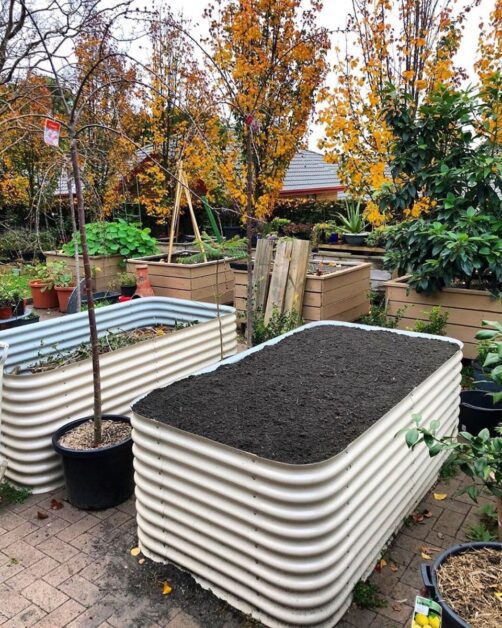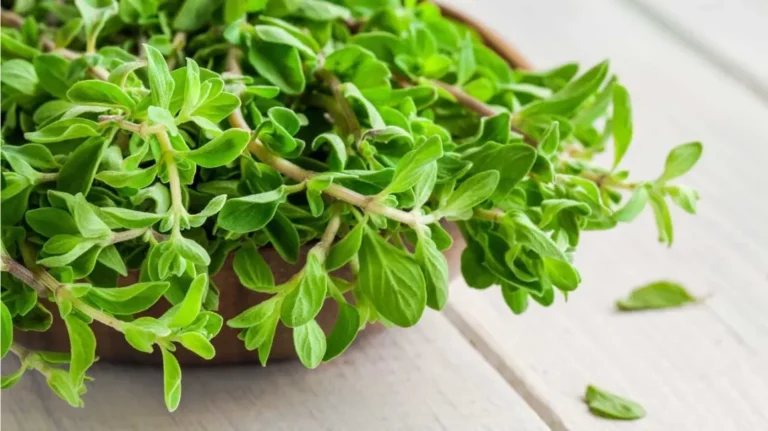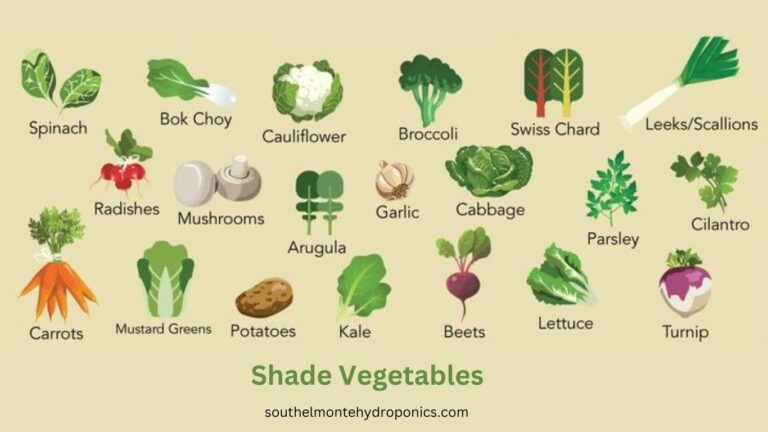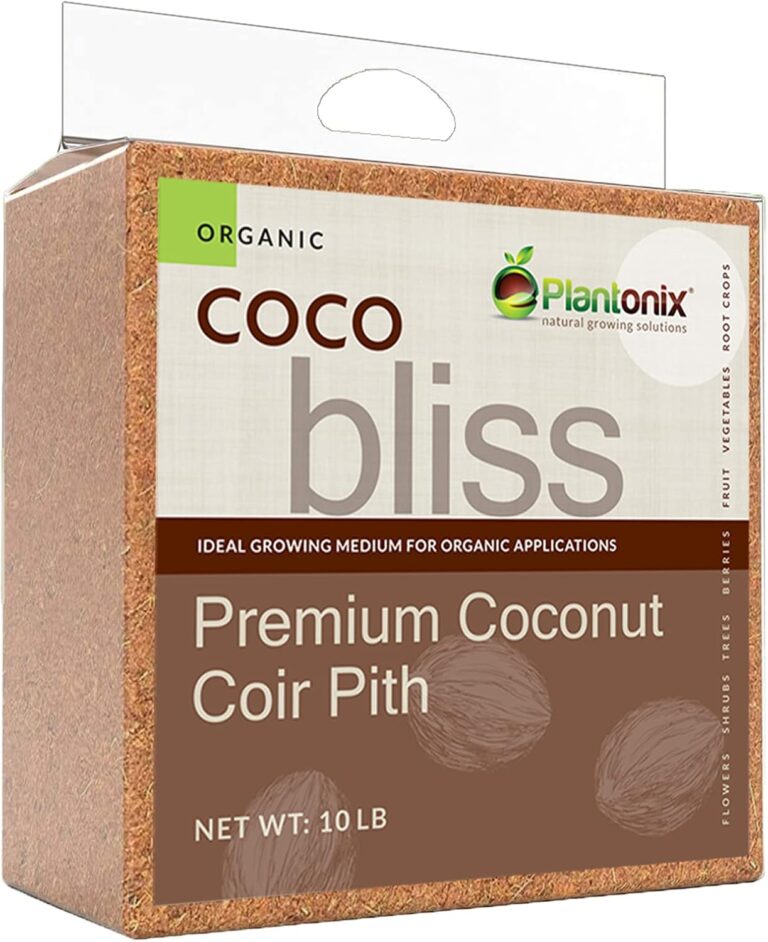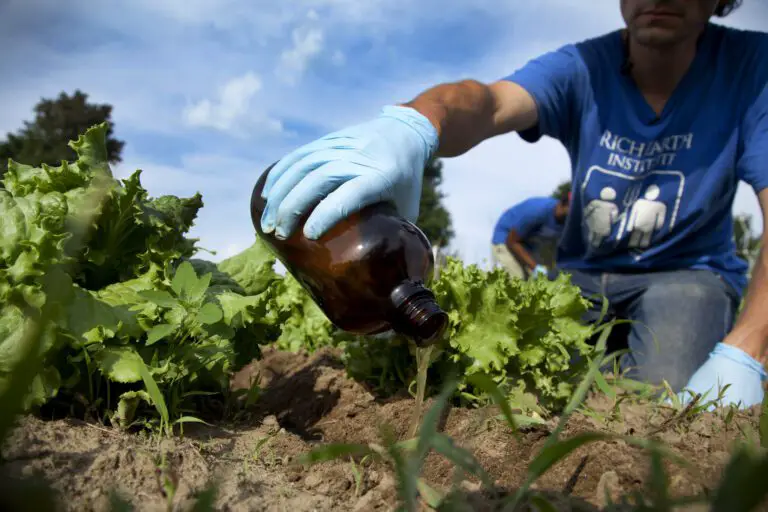How to Fill Your Birdies Beds with the Right Soil
Did you know that the right soil mix can make your Birdies Raised Beds thrive like never before? Whether you’re a seasoned gardener or just starting out, understanding how to fill your beds with the best soil is crucial for a bountiful harvest. In this guide, we’ll walk you through the essential steps and expert tips for selecting and layering the perfect soil mix. From choosing organic compost to balancing nutrients, you’ll learn how to create an optimal environment for your plants. Ready to transform your garden? Let’s dive into the world of soil science and get your Birdies Beds flourishing!
Table of Contents
Understanding the Importance of Proper Soil for Birdies Beds
Proper soil is the foundation for successful gardening in Birdies Beds. The quality of the soil directly affects the growth and development of plants, making it crucial to understand its importance. The right soil composition provides essential nutrients, moisture retention, and a suitable environment for beneficial soil organisms, all of which contribute to healthy plant growth.
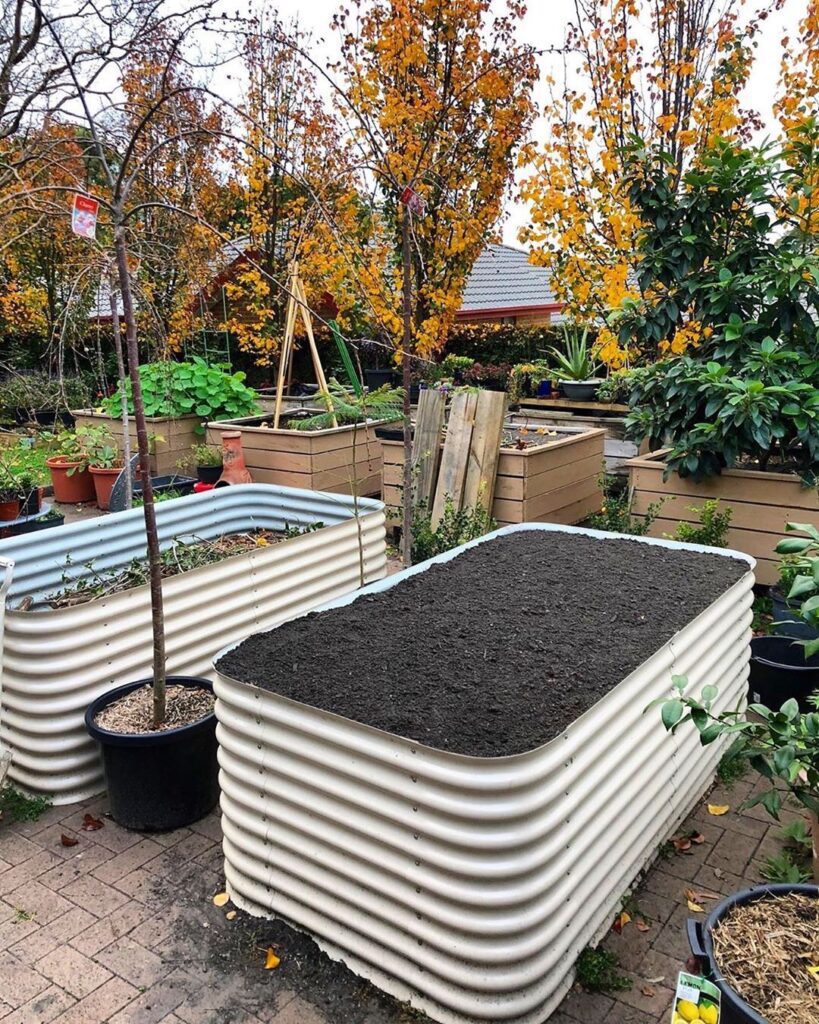
- Nutrients Supply: Proper soil composition ensures plants receive essential nutrients for growth and development.
- Water Management: Good drainage prevents waterlogging, safeguarding against root rot and other harmful effects.
- Air Circulation: The right soil structure allows air to circulate around roots, enhancing oxygenation and nutrient uptake.
In conclusion, the significance of proper soil extends beyond nutrient provision. It impacts water management and air circulation, vital for plant health.
Next, we’ll delve into soil management specifics: selecting the right soil type, assessing drainage requirements, enhancing soil structure, and optimizing fertility.Stay tuned to learn more about optimizing soil conditions for your Birdies Beds.
The King Bird Galvanized Steel Raised Garden Bed exceeded my expectations in both durability and functionality. Assembling it was straightforward, and its deep-rooted design provided ample space for my plants to thrive. The galvanized steel construction ensures long-lasting performance, and its raised design helped prevent pests from damaging my crops. Overall, I’m highly satisfied with this product and would recommend it to any gardener looking for a reliable and sturdy garden bed solution.
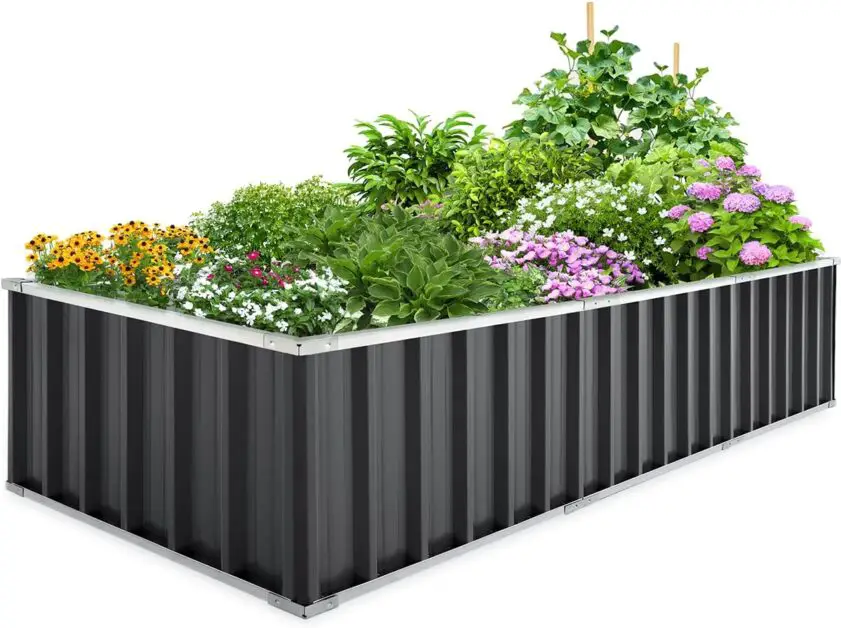
✅ Easy Installation: Features a deep-rooted design for stability and includes installation accessories for convenient setup.
✅ Generous Size: Offers ample space for planting a variety of vegetables, flowers, herbs, and more.
✅ Versatile Use: Suitable for both outdoor and indoor gardening, making it adaptable to various gardening spaces.
✅ Attractive Design: Enhances the aesthetic appeal of your garden or patio with its sleek and modern appearance.
❌ Weight: Galvanized steel construction adds weight to the bed, making it challenging to move once installed.
❌ Limited Depth: While deep-rooted, the bed may not accommodate plants with extensive root systems or deep soil requirements.
❌ Assembly Required: Requires assembly, which may require additional time and effort.
❌ Drainage: May require additional drainage holes to prevent waterlogging, especially in areas with heavy rainfall.
Selecting the Right Type of Soil for Birdies Beds
The selection of the right type of soil for Birdies beds is crucial in ensuring the health and productivity of your plants. Different plants have different soil requirements, and understanding these requirements is vital for successful gardening.

- Soil Texture:
- Soil texture refers to the proportions of sand, silt, and clay in the soil.
- Sand particles are larger (2.0 – 0.05 mm), silt particles are intermediate (0.05 – 0.002 mm), and clay particles are the smallest (less than 0.002 mm).
- The relative proportions of these particles determine the soil’s textural class.
- Different textures impact water retention, aeration, and nutrient availability.
- Loam soil, which contains a balanced mix of sand, silt, and clay, is often considered ideal because it provides good drainage and retains moisture while offering nutrients.
- Drainage:
- Proper drainage is essential to prevent waterlogging, which can lead to root rot and disease.
- Sandy soil drains quickly due to its large particle size but may lack nutrients.
- Clay soil retains water but can become compacted, affecting aeration.
- Assess the clay content and slope of the land to understand drainage capabilities.
- Consider adding organic matter or creating raised beds to improve drainage if necessary.
Remember, selecting the right type of soil for your Birdies beds sets the foundation for healthy plant growth. By understanding the needs of your plants and considering factors such as texture and drainage, you can create an optimal growing environment that promotes vigorous growth and vibrant blooms. Next, we will explore how to analyze your Birdies beds’ drainage needs to further enhance soil performance.
Analyzing Your Birdies Beds’ Drainage Needs
Proper drainage is a crucial factor to consider when cultivating healthy plants in your Birdies beds. The ability of the soil to drain excess water effectively is instrumental in preventing waterlogging, which can lead to root rot and other diseases. Furthermore, well-drained soil ensures that nutrients reach the roots of your plants, promoting their overall growth and productivity.

- Observations:
- After heavy rainfall or watering, observe how water behaves in your Birdies beds.
- Does it quickly drain away, leaving the soil moist but not saturated?
- Or does it pool on the surface, taking a significant amount of time to seep into the ground?
- These observations provide insights into your soil’s drainage capacity.
- Percolation Test:
- Dig a hole approximately one foot deep and wide in your Birdies bed.
- Fill the hole with water and note the time.
- Observe how quickly the water drains.
- If it disappears within a couple of hours, your soil has excellent drainage.
- If it lingers for an extended period, your soil may have poor drainage.
- Consider amendments (such as adding organic matter) to improve soil structure and porosity if needed.
Remember, understanding your Birdies beds’ drainage needs is essential for fostering a healthy growing environment for your plants. By effectively managing soil drainage, you can provide the appropriate moisture levels that promote optimal plant growth while minimizing the risk of water-related issues.
Improving Soil Structure for Optimal Plant Growth in Birdies Beds
Improving the soil structure in Birdies Beds is essential for achieving optimal plant growth and maximizing the productivity of your garden. A well-structured soil creates an ideal environment for the roots to penetrate deeply, access nutrients, and absorb water efficiently. Moreover, it enhances soil aeration, drainage, and nutrient availability, which are crucial for healthy plant development.
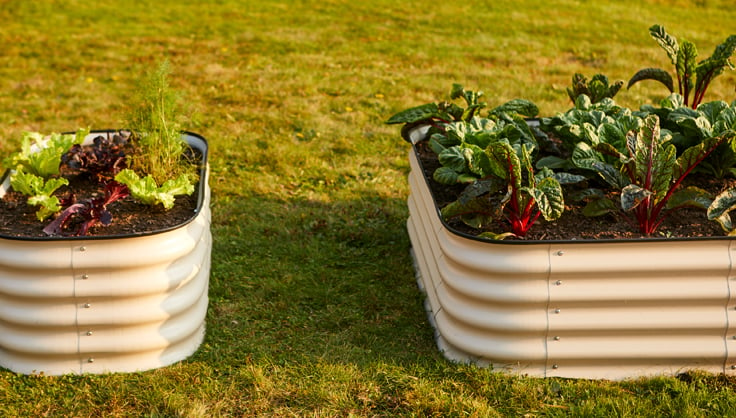
Add compost or well-rotted manure to your Birdies beds.
Organic matter acts as a natural binder, creating soil aggregates.
These aggregates enhance soil porosity and water infiltration.
Improved porosity prevents compaction and waterlogging.
Organic matter also provides nutrients and supports beneficial soil organisms.
Avoid excessive tilling, digging, or heavy machinery compaction.
Disrupting the soil’s natural structure can lead to compaction.
Adopt a “no-till” or minimum disturbance approach.
Use techniques like mulching or cover cropping to protect the soil surface.
Encourage beneficial soil organisms and maintain a well-structured soil.
I used Jobe’s Organics Compost Starter to enhance the soil in my Birdies Beds, and the results were impressive. The compost starter effectively jump-started the decomposition process, enriching the soil with essential nutrients for healthy plant growth. The organic formula ensured that my plants received natural, sustainable nourishment, leading to vibrant and thriving garden beds. Overall, Jobe’s Organics Compost Starter is a reliable choice for anyone looking to revitalize their garden soil and promote robust plant development.
- Jobe’s Organics Compost Starter is formulated with all-natural ingredients, making it environmentally friendly.
- It contains beneficial microorganisms that help break down organic matter efficiently, speeding up the composting process.
- Easy-to-use packaging with clear instructions ensures hassle-free application for beginners and experienced gardeners alike.
- The compost starter is OMRI listed for organic gardening, assuring users of its quality and safety.
- Regular use promotes healthier soil, leading to improved plant growth and vitality.
- Some users may find the price slightly higher compared to other compost starters on the market.
- The compost starter’s effectiveness may vary depending on factors such as temperature, moisture levels, and the types of organic materials used in the compost pile.
- The package size may be insufficient for larger composting projects, requiring multiple purchases for extensive use.
- While it accelerates the composting process, users may still need to wait several weeks to months before obtaining finished compost, depending on their composting method and conditions.
- Limited availability in certain regions may pose challenges for customers seeking to purchase the product locally.
Enhancing Soil Fertility for Healthy Plant Development in Birdies Beds
Enhancing soil fertility is crucial for promoting healthy plant development in Birdies Beds. Nutrient-rich soil provides plants with essential minerals and elements necessary for their growth and overall vitality. By ensuring that the soil in your birdies beds is fertile, you can create an optimal environment for your plants to thrive.
- Nutrient Boost:
- Organic matter (such as compost or well-rotted manure) provides essential nutrients like nitrogen (N), phosphorus (P), and potassium (K).
- These nutrients are vital for plant growth, flowering, and fruiting.
- Beneficial microorganisms in organic matter help break down nutrients, making them available to plants.
- Soil Structure Improvement:
- Organic matter improves soil structure by creating aggregates.
- These aggregates enhance soil porosity, allowing better water infiltration and root penetration.
- Improved structure prevents soil compaction and promotes aeration.
- Moisture Retention:
- Organic matter acts like a sponge, retaining moisture in the soil.
- Consistent moisture levels reduce water stress for plants during dry periods.
| Enhancing Soil Fertility in Birdies Beds | Key Practices |
|---|---|
| 1. Soil Testing | – Regular Analysis: Conduct soil tests to understand nutrient levels. |
| – pH Adjustment: Adjust pH based on plant requirements and test results. | |
| 2. Organic Matter Addition | – Compost: Incorporate well-rotted compost for nutrient-rich organic matter. |
| – Mulching: Apply organic mulch to improve soil structure and fertility. | |
| 3. Cover Cropping | – Nitrogen Fixation: Plant cover crops to enhance nitrogen levels naturally. |
| – Biomass Addition: Turn cover crops into the soil for added organic matter. | |
| 4. Balanced Fertilization | – Complete Fertilizer: Use balanced, slow-release fertilizers for comprehensive nutrient supply. |
| – Micronutrient Boost: Consider micronutrient supplements based on soil test results. | |
| 5. Crop Rotation | – Disease Prevention: Rotate crops to reduce the risk of soil-borne diseases and pests. |
| – Nutrient Diversity: Different plants have varied nutrient needs, promoting balanced fertility. | |
| 6. Vermicomposting | – Worm Castings: Integrate vermicompost to enhance soil structure and nutrient availability. |
| – Microbial Activity: Boost microbial activity for nutrient cycling. | |
| 7. Mycorrhizal Inoculation | – Mycorrhizal Fungi: Introduce mycorrhizae to enhance nutrient absorption by plant roots. |
| – Improved Nutrient Uptake: Facilitates better nutrient uptake and plant health. | |
| 8. pH Monitoring and Adjustment | – Regular Checks: Monitor pH levels and adjust as needed for optimal nutrient availability. |
| – Lime Application: Apply lime to raise pH or sulfur to lower pH if necessary. |
In conclusion, enhancing soil fertility in Birdies Beds is a key factor in promoting healthy plant development. Incorporating organic matter into the soil provides valuable nutrients, improves soil structure, and encourages beneficial microorganisms. By adopting practices that support soil fertility, gardeners can create an ideal growing environment for their plants and ensure their long-term success.
Identifying and Addressing Soil pH Levels in Birdies Beds
Soil pH levels play a significant role in the health and growth of plants in Birdies Beds. It refers to the measurement of the acidity or alkalinity of the soil, and it is crucial to maintain a balanced pH level for optimal plant development. Different plants have different pH requirements, and understanding and addressing the soil pH levels in your Birdies Beds is essential for successful gardening.

- Soil pH Testing Kits: You can use soil pH testing kits to measure the pH level of your soil. These kits are widely available and easy to use. They provide instant results and help you understand whether your soil is acidic, neutral, or alkaline.
- Collect a Soil Sample:
- Take a soil sample from the area you want to test. Remove any stones or debris.
- Place the sample in a clean container.
- Use the Testing Kit:
- Follow the instructions provided with the kit.
- Typically, you’ll mix the soil sample with a chemical solution and observe the color change.
- Compare the color against a chart to determine the pH level.
- Interpret the Results:
- A pH value of 7 is neutral. Below 7 indicates acidic soil, while above 7 indicates alkaline soil.
- Most plants thrive in slightly acidic to neutral soil (pH 6 to 7.5).
- Adjusting Soil pH:
- If your soil is too acidic (low pH), consider adding garden lime (calcium and magnesium) to raise the pH.
- For alkaline soil (high pH), incorporate elemental sulfur or organic materials like peat moss or compost to lower the pH.
- Follow recommended application rates based on your soil test results.
Maintaining the appropriate soil pH level in your Birdies Beds ensures that the plants can access essential nutrients from the soil, leading to healthier growth and increased productivity. Regular testing and adjustment of soil pH levels will help you create an ideal growing environment for your plants, allowing them to thrive and flourish in Birdies Beds.
Incorporating Organic Matter to Boost Soil Nutrients in Birdies Beds
Incorporating organic matter into the soil of your Birdies Beds is essential for boosting soil nutrients and promoting healthy plant growth.
- Nutrient Supply:
- Organic matter contains essential nutrients like nitrogen (N), phosphorus (P), and potassium (K), as well as micronutrients.
- As it decomposes, these nutrients become available to plants, supporting their growth and development.
- Soil Structure Improvement:
- Organic matter improves soil structure by binding soil particles together.
- It prevents soil compaction, allowing better water infiltration and root penetration.
- Moisture Retention:
- Organic matter acts as a sponge, retaining moisture in the soil.
- This helps prevent drought stress and ensures consistent water availability for plants.
- Nutrient Retention:
- It enhances the soil’s cation exchange capacity (CEC), allowing it to hold onto nutrients.
- Reduced nutrient leaching means more nutrients are available to plants.
- Microbial Activity:
- Organic matter supports beneficial soil microorganisms.
- These microbes break down organic material, releasing nutrients and improving soil health.
By incorporating organic matter into your Birdies Beds, you can create a nutrient-rich environment that supports healthy plant development and yields bountiful harvests.
Managing Soil Moisture Levels in Birdies Beds
Proper management of soil moisture levels is crucial for the health and growth of plants in birdies beds. The right balance of moisture ensures that plants have access to an adequate water supply while preventing waterlogging, which can lead to root rot and other issues. To effectively manage soil moisture levels, there are several key factors to consider.

Understand the moisture requirements of each plant species in your birdies beds.
Factors like natural habitat, growth stage, and climate influence water needs.
Research and tailor watering accordingly.
Regularly check soil moisture levels using tools like soil moisture meters or visual inspection.
Avoid under-watering (which can stress plants) or over-watering (which can lead to root rot).
Water at the base of the plant, not on the foliage.
Adjust irrigation schedules based on weather conditions (rainfall, humidity) to prevent water stress.
Poor drainage can harm plants by causing waterlogged soil and oxygen deficiency.
Incorporate organic matter (compost, well-rotted manure) to improve soil structure.
Raised beds can enhance drainage, especially in heavy clay soil areas.
Successful management of soil moisture levels in birdies beds requires a proactive and attentive approach. By understanding the moisture needs of your plants, monitoring soil moisture content, and implementing proper drainage techniques, you can ensure optimal conditions for plant growth and overall garden health.
Preventing Soil Erosion in Birdies Beds
Soil erosion can be a significant issue in Birdies Beds, as it can lead to the loss of valuable topsoil and negatively impact plant growth. To prevent soil erosion, it is crucial to implement effective strategies and practices that promote soil stability and reduce the risk of erosion.
- Ground Cover:
- Plant low-growing, spreading plants or use organic mulch as ground cover.
- This protective layer helps hold the soil in place, reducing the impact of raindrops and promoting water infiltration and root development.
- Retaining Walls and Terracing:
- Construct retaining walls or use terracing techniques on slopes.
- These structures slow down water flow, minimizing erosive power and allowing gradual absorption into the soil.
- Contour Planting:
- Incorporate contour planting on slopes.
- Direct water flow along contour lines instead of straight down the slope to reduce erosion.
- Effective Drainage:
- Install drainage systems (such as drainage tiles or swales) to redirect excess water away from the beds.
- Proper drainage prevents waterlogging and maintains soil stability.
Remember to tailor these methods to your specific garden needs and site conditions. Happy gardening! 🌱🌿 .
| Preventing Soil Erosion in Birdies Beds | Key Practices |
|---|---|
| 1. Mulching | – Organic Mulch: Apply a layer of organic mulch to the soil surface to prevent water runoff and soil erosion. |
| – Mulch Types: Use materials like straw, bark, or compost that create a protective barrier. | |
| 2. Windbreaks | – Plant Windbreaks: Position tall plants or install barriers to protect beds from strong winds that can cause erosion. |
| – Strategic Placement: Consider the direction of prevailing winds when planning the garden layout. | |
| 3. Cover Cropping | – Ground Cover: Plant cover crops that provide continuous ground cover, reducing the impact of raindrops on the soil. |
| – Root Structure: Cover crops with extensive root systems help bind soil particles together. | |
| 4. Terracing | – Elevated Beds: Create terraced beds to slow down water runoff, preventing erosion on sloped surfaces. |
| – Retaining Walls: Install retaining walls to stabilize elevated beds and minimize soil displacement. | |
| 5. Proper Watering Techniques | – Drip Irrigation: Use drip irrigation systems to provide water directly to plant roots, minimizing surface runoff. |
| – Watering Schedule: Avoid overwatering, which can lead to soil saturation and increased erosion risk. | |
| 6. Planting Ground Covers | – Low-Growing Plants: Introduce low-growing ground cover plants to protect the soil surface from erosion. |
| – Living Mulch: Plants like clover or creeping thyme can serve as living mulch, offering soil protection. | |
| 7. Contour Plowing | – Plow Along Contours: If cultivating the soil, plow along the contours of the land to reduce water runoff. |
| – Furrow Construction: Create furrows that help direct water flow and minimize erosion. |
In conclusion, preventing soil erosion in Birdies Beds is essential for maintaining healthy and productive plants. By implementing effective ground cover, utilizing retaining walls or terracing techniques, and ensuring proper drainage, you can significantly reduce the risk of soil erosion and promote optimal plant growth in your Birdies Beds.
Controlling Weeds and Pests in Birdies Beds’ Soil
Weeds and pests can be a nuisance in any garden, including birdies beds. These unwanted intruders not only compete with your plants for nutrients and water but can also cause damage and disease. Therefore, it is crucial to implement effective strategies for controlling weeds and pests in birdies beds’ soil.
- Pest Identification: Observe the pests closely. Are they insects, rodents, or other critters? Use field guides or online resources to identify them. Knowing the enemy helps you choose the right strategy.
- Beneficial Predators: Encourage natural predators like ladybugs, lacewings, and parasitic wasps. These helpful insects feast on garden pests. Plant native flowers and herbs to attract them.
- Birdhouses and Insect Hotels: Set up birdhouses and insect hotels. Birds and beneficial insects will find shelter there and help control pests. Plus, it adds charm to your garden!
- Good Garden Hygiene: Regularly remove fallen leaves, fruits, and other debris. Pests often hide in these spots. Keep your garden tidy to reduce their hiding places.
- Mulch Over Them: Use organic mulch (such as shredded leaves, brown cardboard, straw or wood chips) to cover the soil around your plants. Mulch blocks weed seeds from sunlight, preventing germination, inhibits weed growth underneath itself, and retains moisture. It also provides nutrients as it decomposes over time and moderates soil temperatures.
- Exclude the Light: For persistent or numerous weeds, exclude light by layering dampened newspaper (black ink only) or brown cardboard (with tape removed) on the soil. Cover that with 2 inches of straw or compost. This prevents weeds from getting the light they need to grow. It works best when starting a new garden bed or space.
- Pull Them Out or Dig Them Up: Manual weeding is therapeutic for some! Wear waterproof gloves and pull out weeds during the season. Regular maintenance helps keep them in check.
- Cover Crops: Plant cover crops to inhibit weed growth. These crops create a dense canopy that shades out weeds, limiting their access to sunlight and stunting their growth.
- Flaming: Use a propane torch to briefly expose weeds to high heat, causing them to wither. Be cautious and avoid nearby plants.
- Hand Removal: Regularly inspect your garden and remove weeds by hand. It’s a simple but effective method.
- Soil Solarization: Cover the soil with clear plastic to trap heat and kill weed seeds and seedlings. This works best in sunny areas during hot weather.
Remember, a combination of these methods can yield better results.
Understanding the Role of Mulching in Birdies Beds’ Soil Health
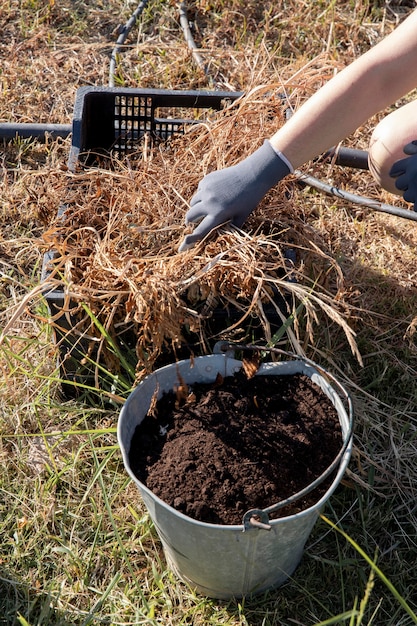
Mulching plays a vital role in promoting the overall health of the soil in Birdies Beds.
- Moisture Retention: Mulch acts as a protective layer, reducing water evaporation from the soil. This helps plants access water for a longer time, especially in hot and dry climates.
- Weed Suppression: Mulch prevents weed growth by blocking sunlight and inhibiting weed seed germination. Fewer weeds mean less competition for nutrients and space.
- Temperature Regulation: Mulch insulates the soil, keeping it cooler in hot weather and warmer during colder seasons. This stability benefits plant roots.
- Nutrient Enhancement: As organic mulch breaks down, it enriches the soil with nutrients. Earthworms and beneficial microorganisms thrive in mulched soil, further improving nutrient availability.
- Reduced Runoff: Proper mulching prevents water runoff, ensuring that plants receive adequate moisture without wastage.
Remember, choosing the right type of mulch (such as straw, wood chips, or compost) and applying it correctly can maximize these benefits in Birdies Beds. Happy gardening! 🌱🌼
Properly Preparing the Soil before Planting in Birdies Beds
Preparing the soil before planting is a crucial step in ensuring the success and productivity of your Birdies beds. By taking the time to properly prepare the soil, you can provide an optimal environment for your plants to thrive.
- Drainage Matters:
- Poorly drained soil can harm plant roots due to waterlogging.
- Incorporate organic matter (like compost or well-rotted manure) to improve soil structure.
- Create air spaces by loosening compacted soil.
- Consider adding sand or peat moss to heavy clay soil for better drainage.
- pH Balance:
- Different plants thrive at specific pH levels.
- Test your soil and adjust pH accordingly.
- Most plants prefer a slightly acidic to neutral pH (around 6.0 to 7.0).
- Add lime to raise pH if it’s too acidic; use sulfur or peat moss to lower pH if it’s too alkaline.
In conclusion, proper soil preparation before planting in Birdies beds is essential for creating a healthy and productive growing environment. By focusing on improving drainage and adjusting the soil’s pH levels, you can set the stage for successful plant growth.
Stay tuned for the next sections of this article, where we’ll dive deeper into enhancing soil fertility and managing soil moisture levels for optimal plant development.
Maintaining Soil Health in Birdies Beds through Regular Care and Maintenance
Regular care and maintenance are essential for maintaining the health of the soil in your Birdies beds. By implementing proper practices, you can ensure that the soil remains fertile and provides an ideal environment for your plants to thrive.
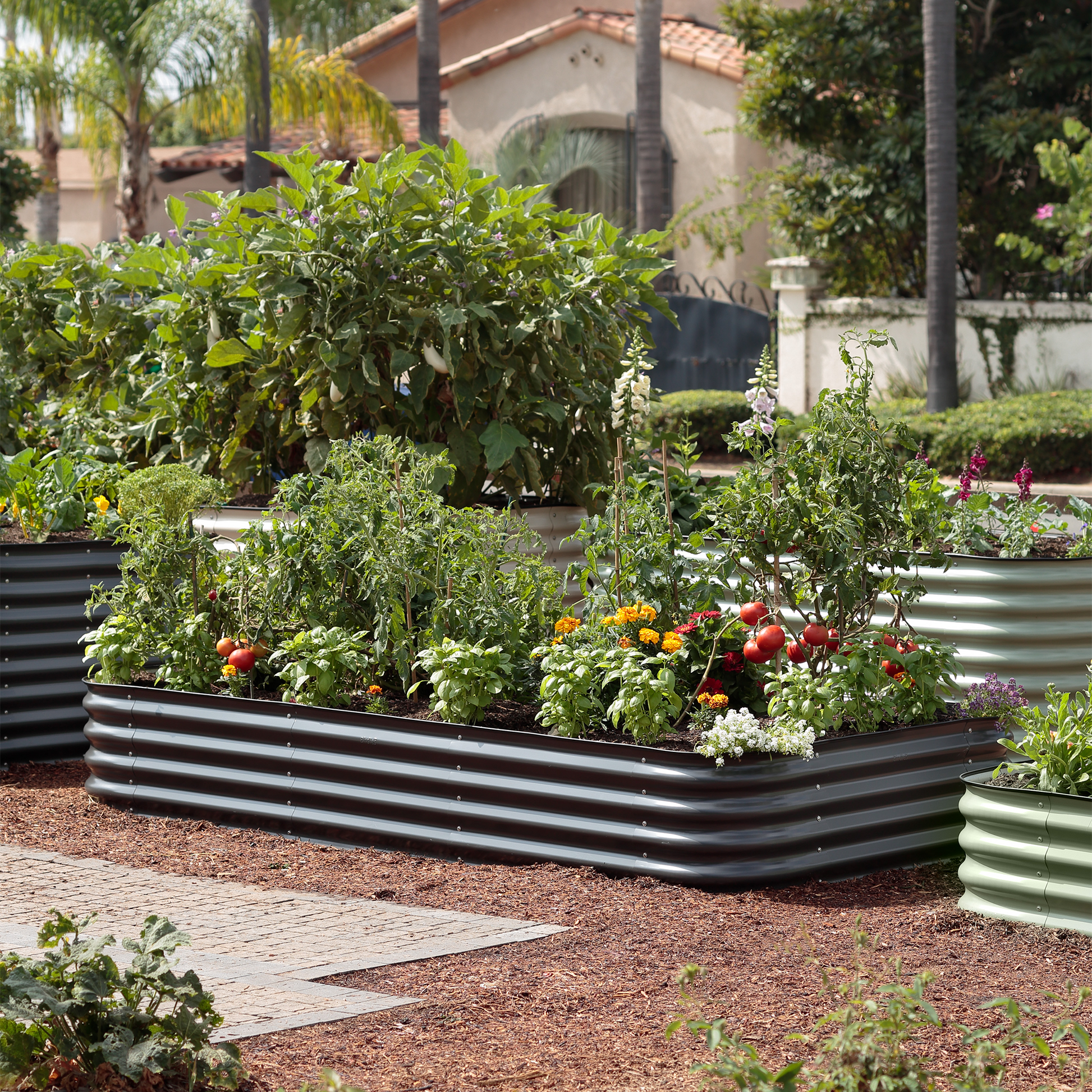
- Soil Moisture Monitoring:
- Regularly check soil moisture by inserting your finger into the soil. If it feels too dry, it’s time to water; if moist, delay watering.
- Achieving the right balance promotes healthy root development and nutrient uptake.
- Nutrient deficiencies:
- Yellowing leaves or stunted growth can indicate nutrient deficiencies.
- Conduct soil tests to assess nutrient levels.
- Adjust fertilization based on results.
- Incorporate organic matter (like compost or well-rotted manure) to enrich the soil.
By following these practices and consistently monitoring the condition of the soil in your Birdies beds, you can maintain its health and provide optimal conditions for your plants to thrive. Proper soil care and maintenance are the foundation of a successful garden, ensuring vibrant foliage, bountiful harvests, and a satisfying gardening experience.
Troubleshooting Common Soil Issues in Birdies Beds
When it comes to gardening, common soil issues can often hinder the success and health of your plants. Understanding and troubleshooting these issues is essential for maintaining optimal soil conditions in your Birdies Beds.
- Drainage Matters:
- Poorly drained soil can harm plant roots due to waterlogging.
- Incorporate organic matter (like compost or well-rotted manure) to improve soil structure.
- Create air spaces by loosening compacted soil.
- Consider adding sand or peat moss to heavy clay soil for better drainage.
- pH Balance:
- Different plants thrive at specific pH levels.
- Test your soil and adjust pH accordingly.
- Most plants prefer a slightly acidic to neutral pH (around 6.0 to 7.0).
- Add lime to raise pH if it’s too acidic; use sulfur or peat moss to lower pH if it’s too alkaline.
Remember, a well-prepared soil sets the stage for healthy, thriving plants! 🌱🌿🌼. .
Watch video for further information:
FAQ
How do I know if my Birdies Beds have proper soil?
You can determine if your Birdies Beds have proper soil by observing the growth and health of your plants. If they are flourishing, it indicates that the soil is suitable. Additionally, conducting a soil test can provide you with detailed information about its composition and any necessary amendments.
What are the best types of soil to use in Birdies Beds?
The best types of soil for Birdies Beds depend on the specific needs of your plants. Generally, a well-draining soil mix rich in organic matter, such as compost, is ideal. This will provide nutrients, retain moisture, and promote optimal plant growth.
How can I improve soil structure in my Birdies Beds?
To improve soil structure in Birdies Beds, you can incorporate organic matter, such as compost or aged manure, into the soil. This will help to loosen compacted soil, improve drainage, and enhance root development.
How can I address high or low pH levels in my Birdies Beds’ soil?
If you have high pH levels in your Birdies Beds’ soil, you can lower it by incorporating acidic amendments, such as elemental sulfur or peat moss. Conversely, if you have low pH levels, you can raise it by adding lime or wood ash. It is important to conduct a soil test to accurately determine the pH levels and take appropriate measures.
What is the significance of mulching in Birdies Beds’ soil health?
Mulching is essential in Birdies Beds as it helps to retain moisture, regulate soil temperature, suppress weed growth, and improve overall soil health. Organic mulches, such as wood chips or straw, can also decompose over time, adding nutrients to the soil.
How should I prepare the soil before planting in Birdies Beds?
Before planting in Birdies Beds, it is crucial to remove any weeds or debris from the soil. Additionally, you can incorporate compost or organic matter to enrich the soil with nutrients. It is also recommended to till or loosen the soil to improve its structure and drainage.
How can I prevent soil erosion in Birdies Beds?
To prevent soil erosion in Birdies Beds, you can use techniques such as contouring the beds, building retaining walls, or using mulch to protect the soil surface. Planting ground-cover plants, like clover or sedum, can also help stabilize the soil and prevent erosion.
How can I control weeds and pests in Birdies Beds’ soil?
To control weeds in Birdies Beds’ soil, you can manually remove them or use organic mulch to suppress their growth. Applying an organic weed control herbicide can also be effective. For pest control, implementing integrated pest management practices, such as using beneficial insects or organic pesticides, can help maintain a healthy soil ecosystem.
How often should I perform regular care and maintenance for the soil in Birdies Beds?
Regular care and maintenance for the soil in Birdies Beds should be performed throughout the growing season. This includes watering as needed, regularly inspecting for pests or diseases, replenishing mulch, and periodically adding organic matter or compost to enrich the soil.
What are some common soil issues that may arise in Birdies Beds?
Some common soil issues that may arise in Birdies Beds include poor drainage, nutrient deficiencies, pH imbalance, compacted soil, and erosion. It is important to regularly monitor your soil and address any issues promptly to ensure optimal plant growth.

Studied Agricultural Engineering-Plant Protection at University of California, Davis.
Head of Content writing team at Southelmontehydroponics.com

